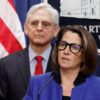Transparency is not one of the Obama Administration’s greatest strengths. Walter Pincus of The Washington Post mistakes congressional efforts to better understand the Administration’s nuclear weapons plans for “congressional dysfunction.”
Pincus is referring to chairman Mike D. Rogers’s (R–AL) efforts to block the Administration’s request to provide $75 million in fiscal year 2014 until it provides the House Armed Services Strategic Forces Subcommittee with a report on what the makeup of the strategic nuclear forces will be in 2018. The Administration intends to use these funds for implementing the New Strategic Arms Reduction Treaty (New START). Rogers refused to provide this funding because so far the Administration has been opaque regarding its future nuclear weapons plans.
For months, the Administration has planned on reducing U.S. nuclear forces, possibly even below the New START level. The treaty damages U.S. security and mandates U.S. unilateral reductions while Russia is allowed to build up.
President Obama also breached his certifications to the Senate that he would speed up the construction of the critical Chemical and Metallurgy Research Replacement Facility. He also certified that he would proceed with all four phases of the European Phased Adaptive Approach, the Administration’s plan for the U.S. and allied missile defense protection. Rather than following up on his certifications, the Administration delayed one and cancelled the other. These actions call into question the legal framework in which the treaty operates.
In March 2012, President Obama stated that the U.S. has “more weapons than we need.” This statement was not backed by a solid analysis based on nuclear weapons targeting that would provide for threatening adversaries’ leadership and means to wage war. It was based on a belief that U.S. nuclear weapons are bad and that others will follow if the U.S. reduces its arsenal. These assumptions are not supported by historical evidence.
The U.S. guarantees security of more than 30 nations around the world. It has reduced its nuclear weapons arsenal by over 80 percent since the end of the Cold War. Rather than following the U.S. example, North Korea and Pakistan emerged as nuclear weapons players. North Korea recently threatened a nuclear attack on the U.S., and its belligerence and capability forced the Administration to recognize that some of its reversals of the Bush Administration’s missile defense policies were a failure.
Russia increased its reliance on nuclear weapons in its strategic doctrine. It also made about 15 nuclear threats to U.S. allies. China refuses to offer any transparency regarding its nuclear weapons programs. Iran is well on its way to obtain nuclear weapons capability and has been making strides in improving technologies to deliver it.
The world is not getting any safer. It is only understandable and prudent that Members of Congress seek more information on the Administration’s nuclear weapons posture plans.





























